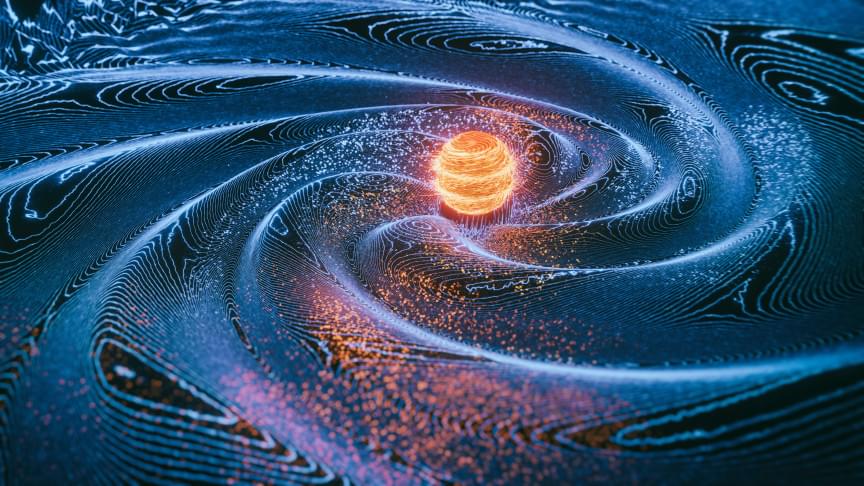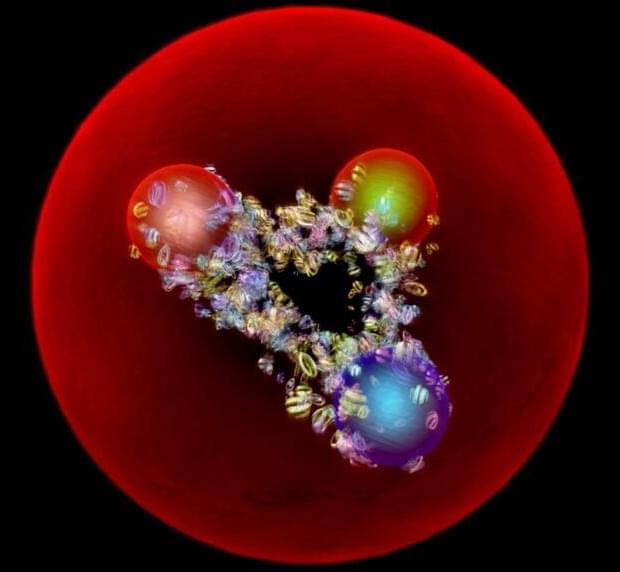
Category: particle physics – Page 439


First fully programmable quantum computer based on neutral atoms
Most quantum computers are based on superconductors or trapped ions, but an alternative approach using ordinary atoms may have advantages.
Back in 2016, we told you about the iBubble, an underwater drone that autonomously follows and films scuba divers. Well, it now has a more capable industrial-use big brother, known as the Seasam.

Quantum Physicists Find Paradoxical Material a Mashup of Three Different Phases at Once — “This Is Uncharted Territory”
‘Geometric frustration’ can cause the electrons in materials with atoms arranged in a triangular pattern to organize in three competing ways simultaneously, reveals a new computational study led by researchers at the Flatiron Institute.
Materials that look like mosaics of triangular tiles at the atomic level sometimes have paradoxical properties, and quantum physicists have finally found out why.
Using a combination of cutting-edge computational techniques, the scientists found that under special conditions, these triangular-patterned materials can end up in a mashup of three different phases at the same time. The competing phases overlap, with each wrestling for dominance. As a result, the material counterintuitively becomes more ordered when heated up, the scientists reported in Physical Review X.

Research demonstrates a new technique for improving long-distance quantum key distribution in a real-world field
An experiment, performed by Istituto Nazionale di Ricerca Metrologica (INRIM) on 200 km of the Italian Quantum Backbone, in collaboration with Toshiba Europe, shows that coherent laser interferometry considerably improves the performances of quantum key distribution protocols in long-distance, real-world networks. The study has been published in Nature Communications.
Quantum Key Distribution (QKD) protocols enable cryptographic keys to be shared between distant parties with an intrinsic security guaranteed by the laws of quantum mechanics. This is made possible by the transmission of single photons, the elementary particles of which light is made of.
The interest for this subject extends well beyond the scientific community, and has now a strong strategic and commercial relevance. The European Commission, within the “European Quantum Communication Infrastructure” intitative, aims at integrating quantum key distribution technologies into specific services throughout the European Union within the next 10 years, and INRIM will take part in the design of this infrastructure with the OQTAVO project.

‘Strange history’ of photons challenges our understanding of quantum interactions
A surprising property of how resonant photons interact with an absorbing medium has been uncovered by physicists in Canada. They say they have found that even photons passing straight through the medium energize atoms within it, causing atoms to spend nearly as much time in their excited states as those that have absorbed photons. They see their result as a challenge to theorists trying to describe how light interacts with matter quantum mechanically.
Aephraim Steinberg and colleagues at the University of Toronto made the discovery while investigating what happens to a beam of photons passing through a cloud of atoms when the photons’ frequency is equal to that of one of the atomic transitions. Intuitively, they say, it would be expected that those photons exciting atoms within the cloud would be absorbed and then at best re-emitted in a random direction. As such, the flux of photons coming from excited atoms that are detected in the forward direction would be miniscule.
Indeed, they point out, this idea that only absorbed, or “lost”, photons contribute to the excitation springs naturally from theory that tells us the total time atoms spend in the excited state is directly proportional to the number of photons that are lost.

Atom Computing Raises $60M Series B to Build Second-Generation Quantum Computing Systems
BERKELEY, Calif. 0, Jan. 20, 2022 — Atom Computing, the creators of the first quantum computer made of nuclear-spin qubits from optically-trapped neutral atoms, today announced closure of a $60M Series B round. Third Point Ventures led the round, followed by Primer Movers Lab and insiders including Innovation Endeavors, Venrock and Prelude Ventures. Following the completion of their first 100-qubit quantum computing system with world-record 40 second coherence times, Atom Computing will use this new investment to build their second-generation quantum computing systems and commercialize the technology.
“Atom Computing designed and built our first-generation machine, Phoenix 0, in less than two years and our team was the fastest to deliver a 100-qubit system,” said Rob Hays 0, CEO and President, Atom Computing. “We gained valuable learnings from the system and have proven the technology. The investment announced today accelerates the commercialization opportunities and we look forward to bringing this to market.”
With this new level of investment, the company will turn its focus to developing much larger systems that are required to run commercial use-cases with paradigm-shifting compute performance.

Large Hadron Collider: New Insight Into the Internal Structure of the Proton
While the Large Hadron Collider (LHC) is well known for smashing protons together, it is actually the quarks and gluons inside the protons – collectively known as partons – that are really interacting. Thus, in order to predict the rate of a process occurring in the LHC – such as the production of a Higgs boson or a yet-unknown particle – physicists have to understand how partons behave within the proton. This behavior is described in Parton Distribution Functions (PDFs), which describe what fraction of a proton’s momentum is taken by its constituent quarks and gluons.
Knowledge of these PDFs has traditionally come from lepton–proton colliders, such as HERA at DESY. These machines use point-like particles, such as electrons, to directly probe the partons within the proton. Their research revealed that, in addition to the well-known up and down valence quarks that are inside a proton, there is also a sea of quark–antiquark pairs in the proton. This sea is theoretically made of all types of quarks, bound together by gluons. Now, studies of the LHC’s proton–proton collisions are providing a detailed look into PDFs, in particular the proton’s gluon and quark-type composition.

Quantum startups Pasqal and Qu&Co merge and promise 1,000 qubits by 2023
Hardware company uses neutral atom design while algorithm experts integrate quantum algorithms into existing software platforms.
Pasqal is combining its neutral atom-based hardware with Qu&Co’s algorithm portfolio to launch a combined quantum computing company based in Paris with operations in seven countries. The companies announced the merger Tuesday, Jan. 11.
Astronomers Want to Build a Neutrino Telescope. Using the Pacific Ocean?
Neutrino detectors are about to get a lot bigger.
One of the most mysterious particles in the universe are neutrinos, with only dark matter out-baffling scientists as a more puzzling phenomenon.
And while there are neutrino detectors in operation hunting for the rarified particles, we might need to resort to the colossal scales of the Pacific Ocean to detect a class of ultra-powerful neutrinos, according to a recent study shared on a preprint server.
And, with a small-scale demo in the works, we may soon see whether this idea will pan out, and transform our grasp of the universe.
Full Story:
Antimatter Mystery Continues To Perplex Scientists
Scientist studying the reason why no antimatter is observed in the universe have uncovered a mystery in their data. While some particles decay in a manner that favors matter, other particles do not. Current theory cannot explain this discrepancy.